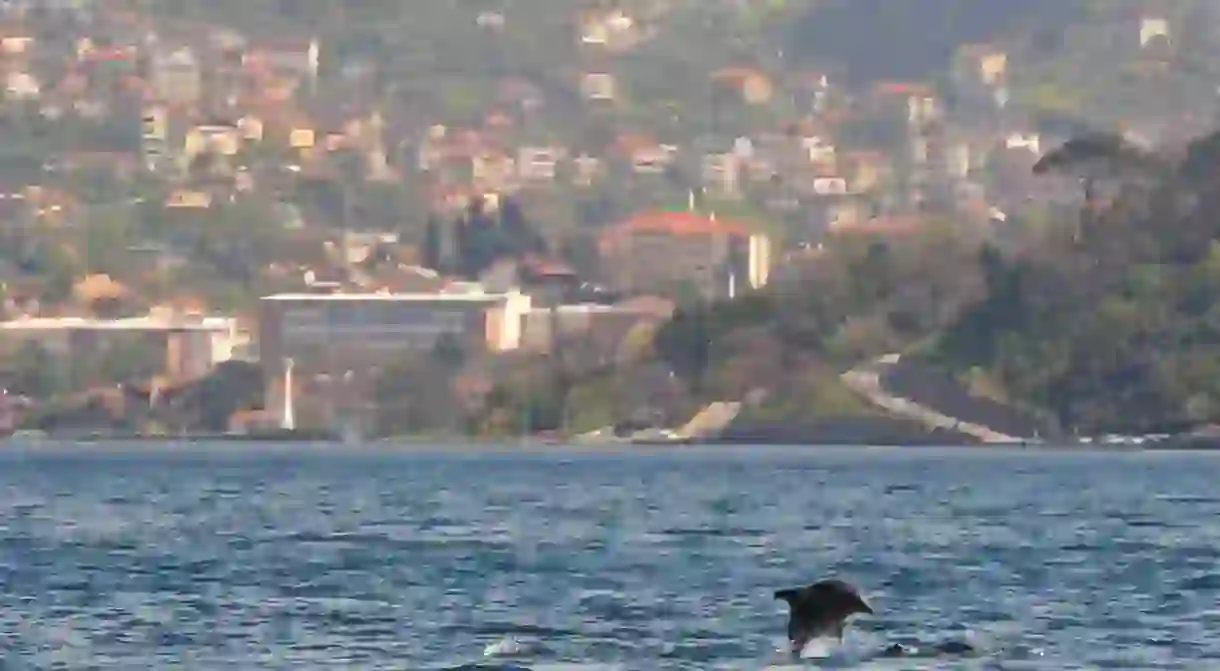The Dolphins of Istanbul’s Bosporus Strait

Culture Trip speaks with marine biologist Dr Ayaka Amaha Öztürk about the dolphins present in Istanbul’s historic Bosporus Strait.
As a stretch of water, the Bosporus is unique – linking two continents but one city. For the people of Istanbul, it is a defining feature – a symbol of their home. Spanned by three suspension bridges, undercut by a tunnel and crisscrossed by numerous ferries daily, this is the link that unites the European and Asian parts of Istanbul. It is a commercial waterway too, busy with the passage of freighters and tankers, but above all, the strait is a source of pride for local citizens in the way that it delivers trade, tourism, unity and a sense of beauty as a backdrop to the city’s architecture. However, the strait has one lesser-known joy – the dolphins that can be seen here as they migrate from the Sea of Marmara to the Black Sea.

Symbols of a healthy ecosystem
Amid the shimmering blue of the Bosporus, the flash of sleek grey fins are visible on the waterline, as a pod of dolphins navigate the waterway. They are an important element of the Bosporus – not only as a source of pleasure to local people but also as a barometer of the health of the marine ecosystem. Yet, these aquatic mammals face the challenge of survival, competing for space with the oil tankers, freighters, fishing vessels and numerous ferry boats that use the busy Bosporus Strait every day. For marine biologist Dr Ayaka Amaha Öztürk, they are the loves of her life.
“I am in love with those dolphins in the strait,” Dr Öztürk says. “If you know Istanbul, you know what the Istanbul strait means to people who live here; it is something you really appreciate in your daily life. The dolphins are very important because if they are around, it means that the sea is healthy, so we need to protect these creatures. The presence of the dolphins is the symbol of a healthy ecosystem and environment for us.”

Dolphin spotting
A visit to Istanbul isn’t complete without sailing across the Bosporus. Whether it is aboard a ferry crossing from Eminönü to Kadıköy on Istanbul’s Asian shore to enjoy its fish and produce market and atmospheric streets, a tour to view palaces from the water, or an organised cruise out to the Black Sea, a trip will offer a whole new perspective of the city’s palaces, mosques, bridges and contours. It’s also an excellent opportunity to see the dolphins that are so loved by the people of Istanbul.
Three species – bottlenose dolphins, common dolphins, and harbour porpoises – live in the Black Sea and the Sea of Marmara and pass through the 32-kilometre-long (20-mile-long) Bosporus as they journey from one area to the other. The narrowness of the strait appeals to dolphins, and with a minimum width of 800 metres (2,625 feet), it is a natural fish trap. “We see dolphins all year round in the strait but more commonly in springtime when a lot of migratory fish come into the strait to go up to the Black Sea for reproduction,” explains Dr Öztürk. May, June and July are the best times to see dolphins in the area, and if you take a Bosporus cruise to the Black Sea, the chance of seeing dolphins is very high.

The impact of the marine environment
Dolphins remain challenged by the changing environment of Istanbul – a city that has seen its population soar from approximately 5 million in 1985 to 15 million people in 2019, along with an increase in marine traffic, new bridges and a road tunnel beneath the strait, which all have an impact on the Bosporus environment. “Marine traffic is probably the biggest problem for the dolphins in this area,” Dr Öztürk tells Culture Trip. “It is not just the presence of boats but also the noise they are creating.” Dolphins tend to shy away from noise, particularly that of speedboats, and increasing marine pollution can also have an impact. However, these creatures keep returning to the Bosporus and surrounding waterways, which have undergone a significant clean-up in recent years.

Protecting the dolphins
Dolphins are protected by law in Turkey, but scientists and citizens of Istanbul alike want to do their part to make sure the marine environment is preserved to keep the precious mammals safe. If you visit the city, take time to enjoy the dolphins but respect their environment and let them bring a little joy into your life as you cross the Bosporus.
Dr Ayaka Amaha Öztürk is a dolphin expert with the Turkish Marine Research Foundation (TUDAV), and the team are always happy to hear from visitors interested in marine conservation and the dolphins.













